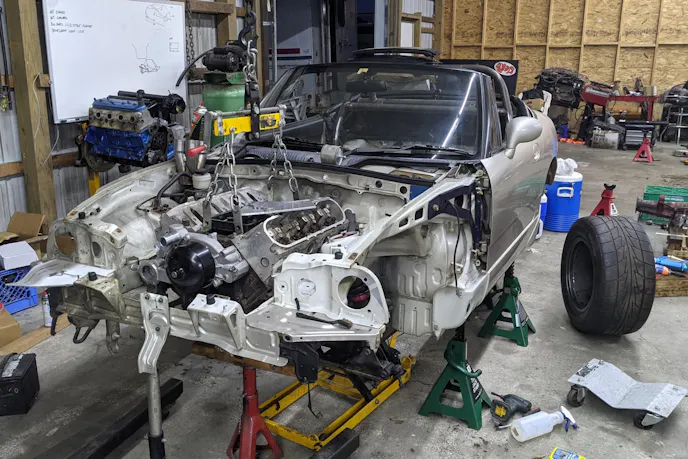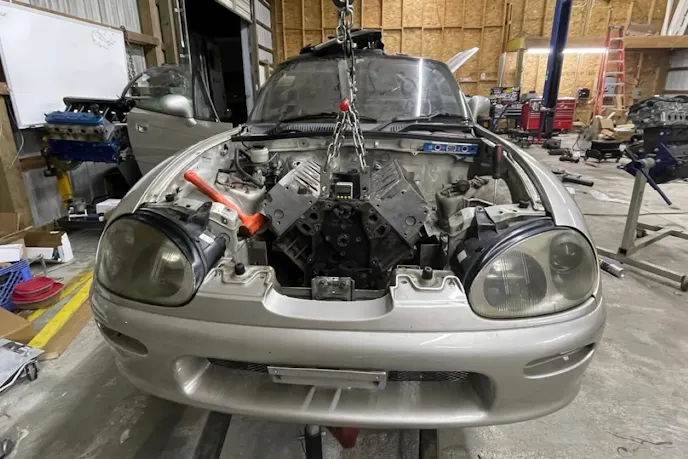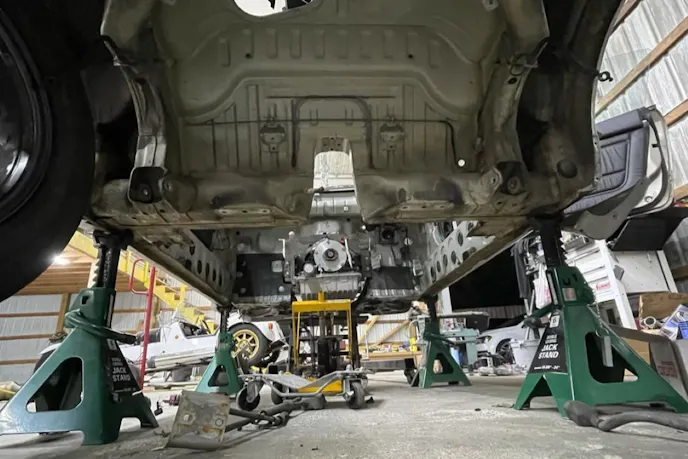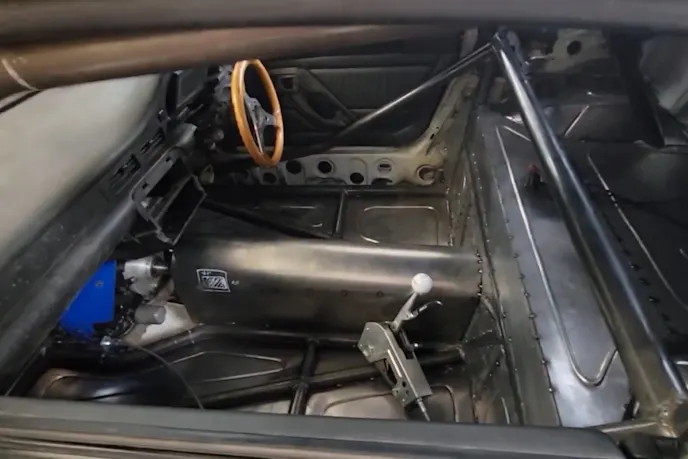The engine swap is as American as apple pie. It dates back to when owners of popular British sports cars in the late 1950s and early 1960s swapped in the then-new small-block Chevy or Ford engine. Today’s version of this trend is to take rear-wheel-drive Japanese sports cars like Mazda’s RX7 and RX8 or Nissan’s 240SX and do an LS swap. But how about a Twin-Turbo LS Suzuki Cappuccino? Is there such a thing as too dangerous?

If you are unaware of what in the world a Suzuki Cappuccino is, let us get you up to speed. The Cappuccino is a rear-wheel-drive sub-compact car sold only in Japan from 1991 to 1998. They weigh about 1,600 pounds with an 81-inch wheelbase and are powered by a turbocharged, three-cylinder, 657cc DOHC engine. It was made to meet Kei car specifications, which allow for lower tax and insurance in Japan if a car is below a certain size and engine displacement.
Small Size, Big Impact
The Kei car segment was introduced by the Japanese government in 1949 to boost domestic car ownership and support Japan’s growing auto industry, all while addressing the country’s limited space. By the 1990s, regulations capped engine size at 660cc and power output at 63 horsepower, following an informal agreement between automakers and lawmakers. These compact cars benefit from lower taxes and insurance premiums, making them highly affordable to own.

In rural areas, Kei cars are also exempt from Japan’s strict parking-space ownership rule, which typically requires proof of a parking spot before registering a car. Beyond small coupes and hatchbacks, the category includes microvans and Kei trucks designed to meet the same regulations. Their compact size, low running costs, and ease of use make them popular across generations, from budget-conscious youth to older drivers looking for simplicity and efficiency in dense city streets or rural roads alike.

Now that these micro-sports-cars are old enough to be imported to the US, it’s possible to see these tennis shoe-sized sports cars on US roads and your local Cars-And-Coffee. It shouldn’t be a surprise that after enough time in the States, Somebody would see the potential for a super-light rear-wheel-drive car with a bigger American engine.
From Kei Commuter to Full-Blown Monster
The owner of this 1992 Suzuki Cappuccino affectionately nicknamed theirs “Cappy” and decided to hand it over to Level Up Factory in Michigan to take the deep dive and replace the 657cc three-cylinder with a 4,806cc eight-cylinder LS. They sourced a junkyard 4.8-liter LR4 from a Silverado, fitted a turbo to each bank with custom-fabricated headers, and backed it with a shorty-glide 2-speed transmission, sending power to a fabricated Ford 9-inch rear axle. There is no way the stock rear differential could handle much more than the stock 63 horsepower the original three-cylinder put out.

The compact, lightweight chassis was designed to offer the public a budget-friendly sports car, not the torque of a twin-turbo LS like a double shot of espresso. The choice was made to cut the floor pan and frame rails from the firewall to the rear bumper to make way for a tubular roll cage and bracing for the parallel four-link rear suspension to hold the axle. The brakes were upgraded with Nissan 300ZX calipers, and the rear tires are Nitto NT555R drag radials wrapped around five-spoke weld wheels to hold the power.

Power? Unknown. Danger? Absolute.
Cappy was vinyl wrapped with 3M gloss blue metallic by the time they got it fired up to cover the original silver paintwork. How much power does Cappy make? Those numbers have yet to be made public, and the owner has kept that to themselves, for now. But with two turbos on a 4.8-liter LS, we know it will be a handful in this tiny car. Is there such a thing as too dangerous? Yes, in the best way possible.
You might also like
The Green Mamba Corvette Rocks SEMA 2025
Bob Bertelsen’s “Green Mamba” Corvette is a hand-crafted autocross weapon. Built in a two-car garage, it stands as a competitive C3 track car.




